Should You Lease or Buy Your Next Car?

There’s a solid chance that, if you’ve landed on this page, you’re in the throes of trying to buy or lease a new vehicle.
It’s an admittedly dizzying scenario; after pawing through all manner of options and finally settling on a single model, there is the temptation to make these significant financial decisions without much care. At this point you’re probably tired, cranky, and simply want to drive off with your new vehicle.
But that would be a disservice at best and a financial misstep at worst. Having your proverbial ducks in a row and knowing the pros/cons of leasing vs buying is a smart way to guard against making a bad fiscal choice. Our goal is to arm you with the information before hitting the dealer lots, giving you the opportunity to look at both sides of the equation and make the best decision possible for you and your family.
Leasing a Car vs. Buying
Photo credit: KamiPhotos / Shutterstock.com
At the risk of oversimplification, leasing is akin to a long-term rental while buying means the vehicle is an asset you own. That’s massively understating several different nuances and details of both transactions but, if you’re looking for a quick answer, it’s a solid description.
Let’s expand on that outrageously basic description. When a customer chooses to buy a vehicle, they tend to negotiate a price which is then financed out over an equal number of payments. Impacting that final number are considerations like interest rate and the total length of the loan which is generally expressed in months. In this scenario, the vehicle becomes an asset in your name – albeit one on which you owe money – that has value. Most situations will result in the customer’s own name being listed on the registration or title papers.
SEE ALSO: How Does a Zero Percent Deal Work?Leasing, on the other hand, puts you in the driver’s seat of a car that is still under the ownership of someone else. Interestingly, that ‘someone else’ generally isn’t the store from whom you got the vehicle; rather, there is a leasing company to whom the dealership sells the car at the price you negotiate. It is that business entity which then leases the machine to you for an agreed upon amount of time. Like a purchase, this is called the term.
How is a Lease Calculated?
Photo credit: Supertrooper / Shutterstock.com
When leasing a vehicle, customers are essentially paying off a pre-determined amount of depreciation – a sum which is calculated by the leasing company. They create this sum by estimating how much they think the vehicle will be worth at the end of its lease term. This is called a residual and is generally shown on paperwork as a percentage.
Depreciation and residual go hand in hand. If a leasing company sets a 43% residual on a vehicle at the end of a four-year lease, that percentage becomes a key player in determining monthly payment; in most scenarios it will actually comprise the largest part of that payment. There are, of course, several other factors which go into determining the amount of money you spend every month for your leased vehicle.
SEE ALSO: 10 Car Maintenance Tips to Keep Your Vehicle Running Problem FreeWhile the car’s residual value may be fixed, its purchase price most certainly is not. Since lease payments are essentially monthly instalments made on the vehicle’s depreciation during its journey to that residual figure, lowering its initial purchase price can have a significant impact on one’s payment. After all, shaving $2000 off its sticker means that’s an amount you don’t have to pay during the lease term. If the lease term is short (say, 24 or 36 months), such an upfront reduction can make a huge difference in the total monthly payment.
Fun fact: dealers like to refer to the total purchase price of a leased vehicle as ‘capitalized cost’. This sum will include any extra fees. To use industry lingo, your negotiation skills in reducing that figure will result in ‘cap cost reductions’. A terrifying term – but one of which you should be aware – is the Money Factor of your new lease. Yes, that’s its real name. In simple terms, it refers to the lease interest rate but is calculated in a different way and generally displayed as a confusing decimal figure. To convert that number to a more familiar interest rate percentage, multiply it by 2400 regardless of the lease term; for example, a money factor of 0.0017 equals roughly 4% interest.
Remember that residual value we spoke of earlier? Keep an eye on it. Since leasing is generally an agreement to pay a fixed amount of depreciation, vehicles which do a better job of hanging on to their value will have more attractive monthly payments. After all, paying off $8000 worth of depreciation over 36 months will result in a higher payment than a scenario in which the total is even just a couple of thousand dollars more.
Cost Considerations of Leasing vs Buying
Photo credit: Stasique / Shutterstock.com
There are numerous pros and cons to consider when trying to calculate the cost of leasing a car compared to buying one. Chief amongst these is the amount of money, if any, that’s due upfront (or at the time of signing the paperwork).
Remember when you rented that apartment downtown? The landlord asked for the first month’s rent right away. This is pretty standard practice, since whoever owns the building wants their money at the beginning of the month rather than the end. Any other scenario could result in shady characters jumping from place to place every 30 days and never paying a penny in rent.
SEE ALSO: How to Negotiate Car Price: 10 Things You Need to KnowThe same thing goes for leasing. While there are exceptions, it is generally accepted that the first month’s payment on a lease is due “at signing”, which is to say the time when you’re putting pen to paper in the dealership’s finance office. Other fees, like those for registration and tags, can be due upfront as well. It’s not a terrible idea to take care of and pay for items like that at the time of signing, since rolling those fees into the lease (or purchase loan) subjects them to an interest rate.
Speaking of interest rates, keep an eye on your credit score. Knowing this tidbit of information before ‘running the numbers’ with a sales rep will permit the savvy customer to plan ahead and avoid unwanted surprises. If there is a history of credit problems on your file, there’s a reasonable chance the lending institution will want some form of down payment as a type of security deposit in order to extend you an attractive loan offer. Upfront money can also sometimes be used to reduce the length of a purchase agreement which, in turn, could lower the interest rate for financing.
Unexpected Costs of Leasing vs Buying
Photo credit: Juergen Faelchle / Shutterstock.com
Placing a down payment of any size when buying a car isn’t a bad idea since you are effectively reducing the amount of money being financed over a certain term. Depending on the interest rate being charged, there’s a decent chance you’ll save a chunk of cash over the life of the loan by paying a bit of it up front. After all, total interest charges on a $30,000 loan will be more than those on a $25,000 loan – all else being equal.
However, one shouldn’t place a large down payment in a leasing scenario thanks to a quirk of math. Remember that, in a lease, the customer is essentially paying for an expected amount of depreciation. Throwing down a chunk of cash at the beginning of a lease will certainly serve to reduce monthly payments by a significant amount, just like negotiating down the total price of the car will do the same. At the risk of oversimplification, a $3600 down payment will reduce the monthly payment on a 36 month lease by $100 per month.
SEE ALSO: Wheels & Deals: Your Credit Score and Car BuyingBut – and here’s the kicker – if your leased vehicle is wrecked or stolen during the first few months of the term, one risks losing part of the down payment due to the unique way insurance companies pay out a lease. Remember, in a leasing scenario, you don’t own the car. In the event of a total loss, insurance companies tend to pay the owner an actual market value of a vehicle – and, in this case, the owner isn’t you. That $3600 you put down to reduce the monthly payments (which essentially simply made an upfront payment on the amount of depreciation you’ve agreed to pay) has now vanished like dust in the wind.
Whichever option you select (leasing vs buying), it behooves the smart shopper to read each line of the deal being presented to them by the seller. Look for administration fees, documentation charges, and so-called warranties that can drive up your monthly payment by a significant margin – especially on a short term lease. Ask for clarification on any charge you don’t recognize or with which you are not comfortable. If a dealership or their representative cannot (or will not) explain a certain fee or simply tries to pass it off with the phrase “everyone has to pay that”, it’s time to practice your skills in walking away.
One other surprise that could pop up during a lease? Mileage restrictions. Since the leasing company is projecting the car’s future value, they are doing so on the assumption of a fixed amount of annual driving – generally 12,000 miles per year. Exceed this amount, and you could be on the hook for extra charges at the end of your lease.
Leasing vs Buying – Tax Differences
A portion of every monthly lease payment is comprised purely of sales taxes. Here’s the good news: a customer only pays tax only on the amount of the vehicle value you are using (its depreciation). Put simply, rather than paying 5% sales tax on a $30,000 car, one pays 5% of the $12,000 in total vehicle value decline during the lease (final selling price less projected residual value). Simplified, customers only pay tax on their monthly payment, not the whole value of the car. If you dislike taxes – and who doesn’t? – you’ll enjoy this part of leasing.
Things are significantly different when buying a car. In this case, the customer pays sales taxes on the final sales price (inclusive of most fees) that’s been agreed upon. Using the tax rate in our leasing example, a customer would have to pay $1500 in sales taxes on a car being bought for $30,000. It’ll not escape your notice that, save for fronting a down payment, that $1500 is rolled into the total purchase loan, meaning it is subject to interest charges by the lender.
Photo credit: AlexLMX / Shutterstock.com
Become an AutoGuide insider. Get the latest from the automotive world first by subscribing to our newsletter here.

Living in rural Canada, Matthew has immersed himself in car culture for over 30 years and relishes the thought of a good road trip. A certified gearhead, he enjoys sharing his excitement about cars and is very pleased to contribute at AutoGuide. Matthew is a member of Automotive Journalists Association of Canada (AJAC).
More by Matthew Guy



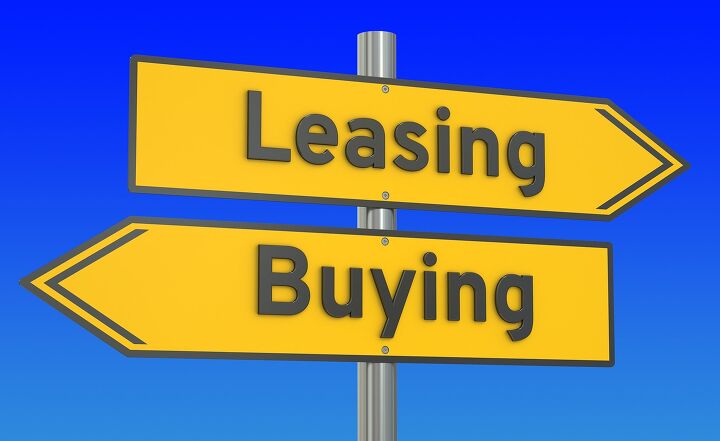















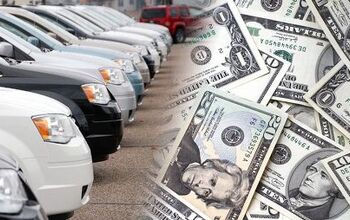
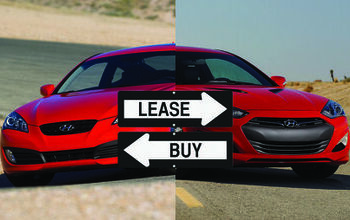
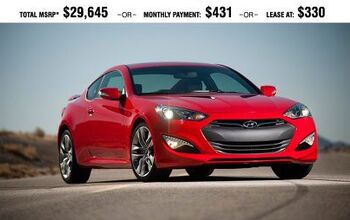

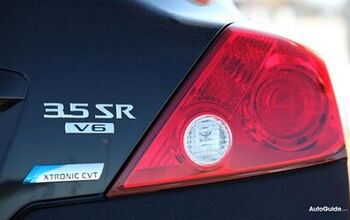












Comments
Join the conversation
Keeping, maintaining and possibly repairing two reliable, 25 year old vehicles when I have more than enough funds available to purchase new ones best expresses my regard for the products modern auto manufacturers are pushing. Buying out of synch is like setting off a thousand dollars of fireworks at the end of March.